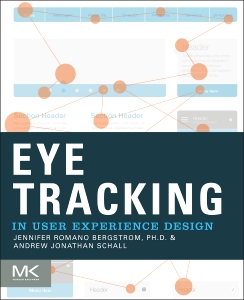Research: Eyetracking
UXmatters has published 3 articles on the topic Eyetracking.
Top 3 Trending Articles on Eyetracking
-
Evaluating the Usability of Search Forms Using Eyetracking: A Practical Approach
January 23, 200624 CommentsIn this article, I’ll present findings from eyetracking tests we did to evaluate the best solutions for label placement in Web forms. Today, forms are the primary—often the only—way users have of sending data to Web sites. Web 2.0 makes extensive use of forms. For example, on Flickr™, Del.icio.us, and Writeboard™—which, by the way, I used when writing this article—users provide all of their tags, comments, and other information using forms. Users submit queries to search engines using forms. Ecommerce sites also rely heavily on forms that let visitors find and purchase products. (I’ve never browsed for books on Amazon®. I always search for them.)
So, the usability of forms is often massively important to the overall usability of a Web site. That’s why we decided to subject some of these forms to a quick round of eyetracking tests and have analyzed the resulting data to better understand what makes Web forms usable—or unusable.
We conducted these evaluations in the Consultechnology eyetracking lab. Magda Giacintucci assisted me in conducting the tests and setting up the lab. Three different groups of users participated in the tests. We classified the users by their level of expertise using the Internet—rookie, intermediate, and pro. In the pro group, I included people from my team—from both the programming and user experience groups. I’d like to stress the fact that it was our aim to do these tests quickly and simply, in order to gain practical knowledge that would help us improve the design of forms rather than to do scientific analysis for an academic paper. Read More
-
Eye Tracking in User Experience Design
September 22, 2014This is a sample chapter from Jennifer Romano Bergstrom and Andrew Schall’s new book, Eye Tracking in User Experience Design. 2014 Morgan Kaufmann.
Chapter 5: Forms and Surveys

Introduction
Most parts of a Web experience are optional. Forms usually are not.
You want to use a Web service? Register for it—using a form. You want to buy something on the Internet? Select it, then go through the checkout—using a form. Want to insure a car, book a flight, apply for a loan? You will find a form standing as a barrier between you and your goal. Read More
-
Introduction to Eyetracking: Seeing Through Your Users’ Eyes
December 6, 2005This article is the first in a series of articles on eyetracking that will appear in UXmatters. Over the coming months, I’ll use eyetracking to evaluate a lot of world-renowned user interfaces—including Web sites like Amazon.com®, Google™ News, and eBay®; Rich Internet Applications (RIAs); and desktop applications—and analyze quantitative eyetracking data to provide best practices for designing user interface elements like navigation systems, menus, and forms, and for effective ad placement.
For some time, usability professionals have evangelized the term discount usability testing. Discount usability testing was a product of the early years of the Internet. Its techniques promised to provide a simple, fast, and relatively economical way of conducting usability studies and improving users’ experience of the Web and other software user interfaces. However, such studies are mainly qualitative and subjective. The data reflect users’ conscious thoughts and feelings as well as the observers’ impressions. Some think this is the best, even the only method of conducting usability studies, but there are other—in some situations, perhaps better—ways of evaluating user interactions. Eyetracking offers unique benefits and provides a practical alternative to conventional discount usability testing. Read More